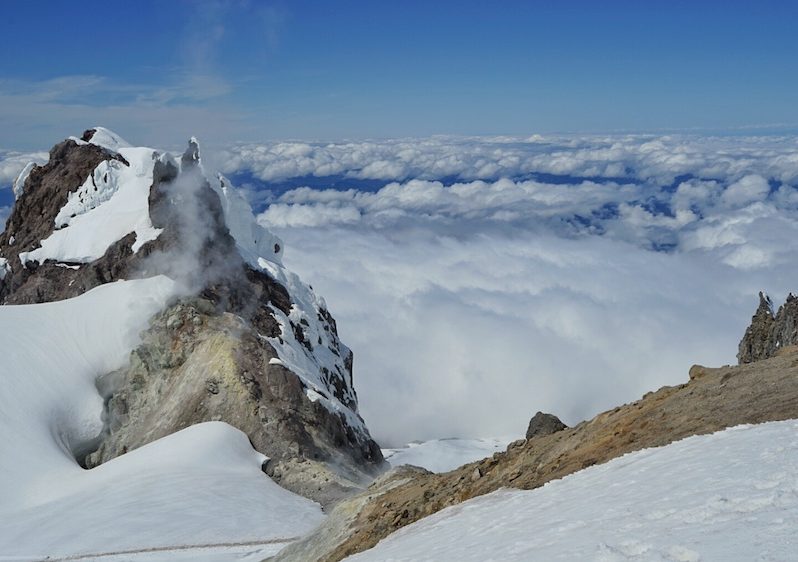Climber, skier and photographer Joe Poulton was up doing search and rescue training on Mount Hood June 4, when his team got the call that a climber had fallen.
Poulton’s EMT colleague Kevin Sundbaum took off at full speed to reach the fallen climber.
“He just busted up the hill and got there super-quick,” says Poulton.
Unfortunately, Ward Maxfield was already dead. The 66-year-old climber from Idaho had fallen about 400 feet from the Coleman Headwall down into the Hot Rocks, and his family members including his 17-year-old grandson had been unable to resuscitate him with CPR.
This photograph by Poulton, captured with his new Sony A7, shows the tragically beautiful view to the south from where Maxfield died:
Poulton has worked as an EMT for 6 years in Colorado and the Portland area. He was up on the mountain training with the American Medical Response Reach and Treat, or RAT, team, a group of EMTs and Paramedics that responds to medical emergencies and search and rescue missions in challenging and hazardous areas, including the south side of Mount Hood.
“We had some gear with us, but we weren’t set up for this kind of mission,” he says. He and his team had to wait for support from a Portland Mountain Rescue team carrying the necessary equipment to carry Maxfield’s body down the hill.
AMR paramedic Bozeb Beckwith escorted Maxfield’s distraught family down the mountain, then later climbed back up to assist with the recovery.
To stay safe from rocks and debris falling down as the day warmed and the ice and snow melted, Poulton and his RAT teammates moved from the Hot Rocks to the Hogsback.
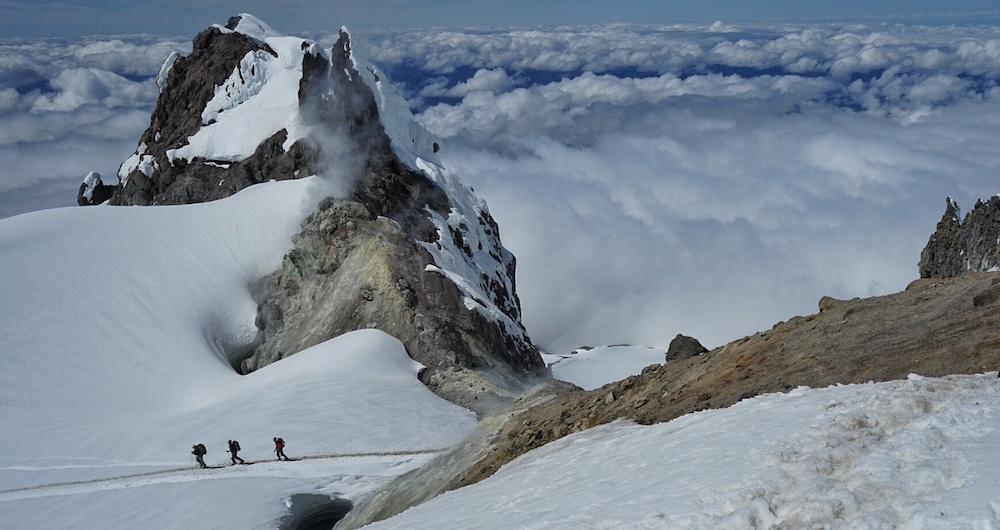
The wait was long, due to traffic delays from the ongoing U.S. 26 Mt. Hood Safety Project. The Portland Mountain Rescue team arrived after about five hours, packing ropes and a “litter” used for hauling bodies down the mountain.
Here they are hauling the “litter” down to the scene of the accident:
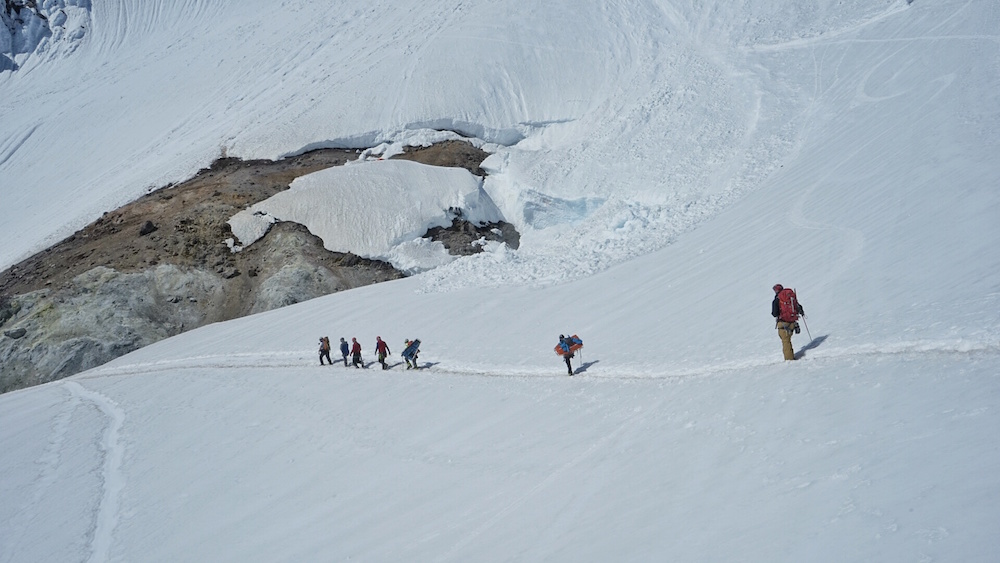
You can see that the litter is split in two and carried by the last and second-to-last responders in line as they drop down to the Hot Rocks.
For Poulton and the other RAT team trainees, this tragic accident did offer the opportunity to see first-hand how the “Hogsback Kit” functions in practice. This is the low-angle rope system used to lower people down steep terrain safely using anchors and a break bar rack. As this photo shows, the natural fall line leads to a hazardous hole, thus the need for teamwork and caution once the body has been packaged for transport.
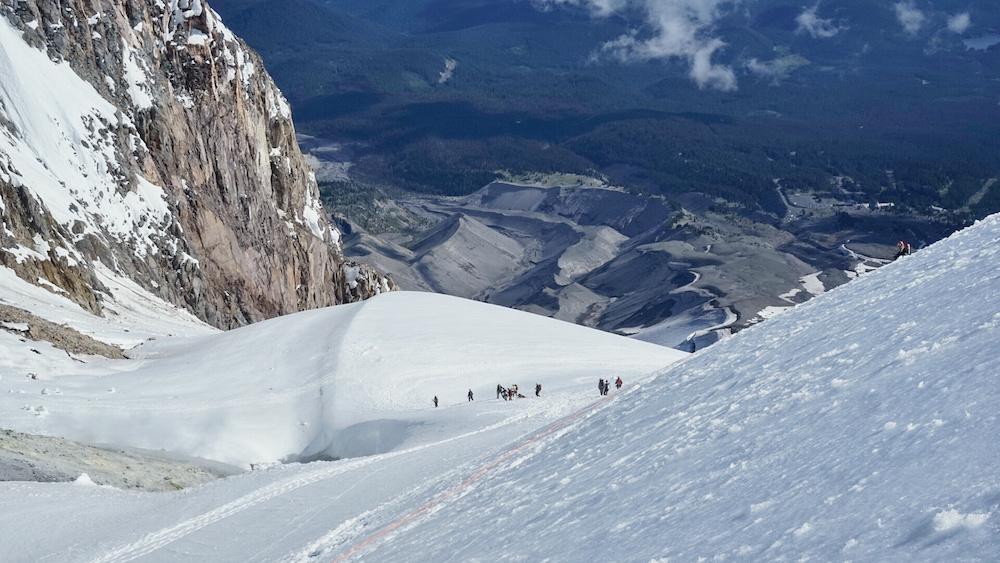
Those are the Steel Cliffs to the left in that photo, and the White River Canyon is far below the team in the distant background.
It was Poulton’s first time helping out with the Hogsback Kit, and he paid close attention to the procedure. “You set up your first anchor right on the Hogsback, and you have 4-6 guys on the litter, and they kind of guide it, and the weight is on the anchor, and it’s run through the break bar rack,” he says. “So somebody is manning the break bar, and somebody else is heading downhill to set up another anchor. That way the anchors kind of leapfrog. On this day they also had a fourth anchor that they used as a pendulum.”
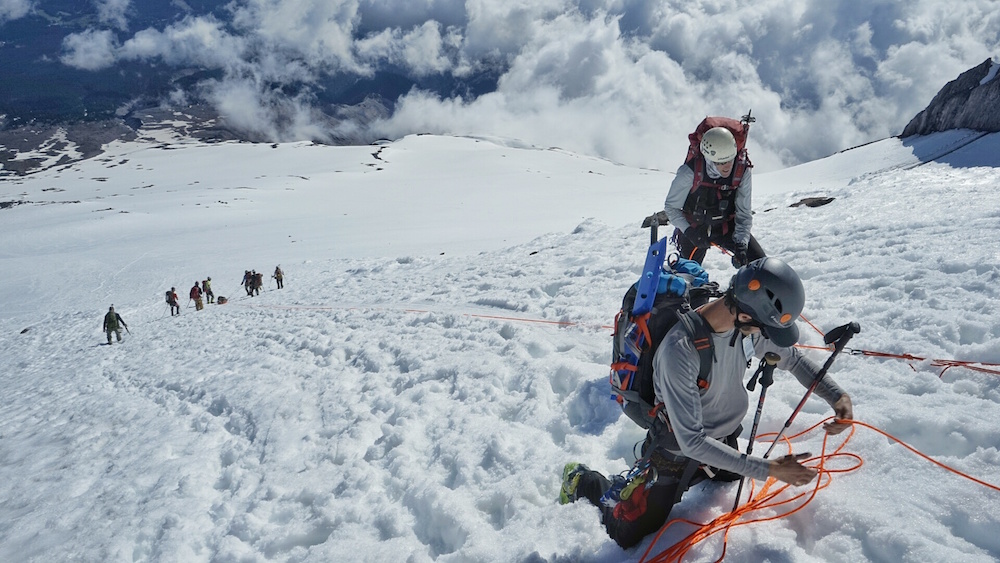
The process was a somber one, given the death of the man they had responded to help.
Ward Maxfield was an experienced hiker who ran marathons and was in good physical condition. The cause of his fall was at first hypothesized to be a heart attack or stroke, because he reportedly fell without slipping and did not appear to make an effort to self-arrest while sliding down toward the rocks. But the cause of death was later determined to be injuries from the fall he sustained.
It was the first climbing death on Mount Hood in 2015, after several rescues in January and a skiing accident at Ski Bowl New Years Eve 2014 that killed 37-year-old former racer Brian Fletcher.
The most recent prior Mt. Hood climbing death was Robert Cormier, a Catholic priest from New Jersey who fell 1,000 feet to his death on May 13, 2014.
There were three deaths on Mount Hood in the summer of 2013:
- Kinley Adams, a 59-year-old dentist and experienced climber;
- Sebastian Kinasiewicz, a 32-year-old Polish military officer and combat photographer;
- Collin Backowski, a 25-year-old snowboarding coach with High Cascade Snowboarding Camp.
Poulton says it was a sad and long day for the responders who transported Maxwell’s body down the mountain. He also notes that, as in mountain myths, a Mount Hood raven seemed to take a keen interest in the death.
“A raven showed up while we were up there. It circled around him, landed by the body, paused, and then flew away.”
Big thanks to Joe Poulton for sharing his images and thoughts. You can check out his work at poultonimaging.com.
Last modified: June 10, 2015

